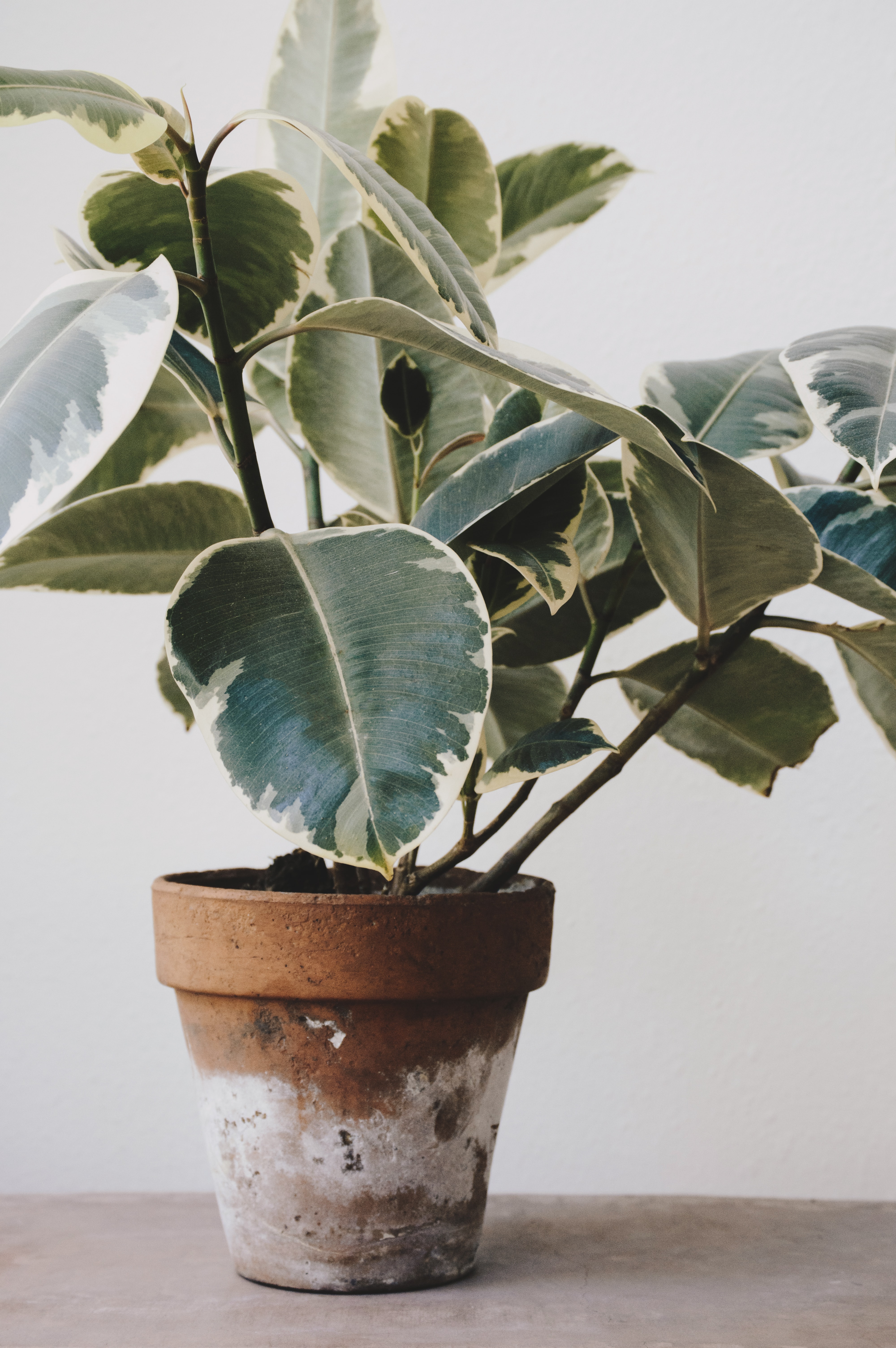Chase Away The Winter Blues With Winter Indoor Plants
Posted by Rose & Blossom on 25th Feb 2020
Winter Indoor Plants Are More Than Just Decorative
Winter means cold weather and less sun. It’s a time when many plants rest, and others grow slowly. For people who love warmth, sunshine, and the look of lush greens and colorful blooms, this season can weigh down on the spirits. That’s where winter indoor plants come in!
Winter indoor plants thrive on less sunlight and, if properly cared for, will flourish all season long and throughout the whole year. Not only can indoor plants boost your aesthetic and bring a little bit of vibrancy indoors, they are also good for your health. Indoor plants absorb carbon dioxide and release oxygen. This incredible process helps reduce stress, boost your immune system, increase your energy, concentration and productivity, and even heighten your mood!
If you’re having trouble chasing away the winter blues, invest in a couple of our lush and beautiful houseplants to bring color, vibrancy, and happiness to your home as you wait for the weather to improve.So what are the best plants to grow indoors and help you beat the winter blues? Here are a few of our favorite hardy varieties.
1. Bromeliads
Bromeliads are exotic plants that bring lots of color and texture to any home. They have an unusual appearance composed of sword-like leaves that grow around a “cup.” They will live throughout winter if you put them in a spot with indirect light and lots of humidity. (A humidifier will work if you don’t have high humidity.)
Don’t have a green thumb? Bromeliads might be the perfect plant for you, as they are very forgiving. These indoor plants do not require fertilizers to grow. They are incredibly tolerant of drought, fluctuations in temperature, and inconstant feeding.
2. Dieffenbachias
Also known as dumb cane, these winter indoor plants feature showy, broad leaves with white flecks. Dieffenbachia plants adapt to all kinds of lighting and temperature conditions well, and most varieties thrive under filtered light situations.
Note: while Dieffenbachia is beautiful, it is also dangerous! Don’t leave in a location where curious children and pets can reach it. If eaten or chewed, the leaves of this plant can cause temporary swelling of the throat and tongue.
3. Kalanchoes
Kalanchoes are native to arid regions, and love environments with low humidity levels. They’re prized by florists for their interesting leaf shapes, small and colorful blooms, and easy-to-grow nature.
You can help kalanchoes grow well by placing them near windows that face the south for lots sunlight, and do not let the temperature drop below 55-60° F.
4. Succulents
Succulents are popular outdoor plants that come in all shapes and sizes, but they flourish just as well indoors. Here’s a rule of thumb to follow when you want to bring your succulents inside: Look at the growing zone of that particular succulent and the growing zone of the place you live in. Any succulent that is rated higher than the place you live in should be brought inside to survive during winter.
Many succulents are dormant during the winter and are not as thirsty for water. If they are winter growers, however, you may have to water more frequently. To be on the safe side, only water if the soil surrounding your succulents is completely dry.

Winter Indoor Plants That Purify The Air
As we mentioned before, many house plants do more than brighten up a space. Some improve air quality and remove toxins. Here are a few of the best air purifying varieties of houseplants:
1. Arrowheads
Arrowheads are vining houseplants with leaves that come in green and white, green, and bronze shades. They have a compact look when young, but once they begin growing their vines extend outward from the plant. You can keep them pruned to retain their compact shape or place them inside hanging baskets for a cascading look. They can also be made to climb up a trellis or a wall with shelving.
These plants clean the air and are very seldom troubled by pests. However, because they tend to creep, they need more pruning than other plants. It’s also important to note that arrowheads are slightly poisonous, so keep them away from small children and pets.
2. Heart-leaf Philodendrons
This Philodendron variety is an easy-to-grow houseplant that’s not picky about light. They are named for their pretty heart-shaped leaves that emerge bronze-hued but will quickly turn green. They’re eager to grow, so if you don’t want them to branch out, pinch the leaves close to the node to keep your Heart-leaf plants looking bushy.
These winter indoor plants are tropical in origin but will stay evergreen throughout the year. They thrive with little care, but will appreciate occasional misting. Many philodendrons can survive temperatures between 55 to 90° F.
3. Peace Lilies
Peace lilies are tropicals that do not enjoy direct sunlight and the cold, but newer hybrids will bloom throughout late winter and well into spring. They have glossy green leaves and beautiful white flowers that provide a stunning accent to any room in your home.
They are very forgiving plants that require little care, and you can get away with watering them just once a week. Remember to keep them out of reach of your pets and small children because peace lilies have toxic sap that can irritate the skin.

Tips for Helping Your Winter Indoor Plants Thrive In Winter
Even with hardy houseplants that require little tending, it’s still vital that you know what care to give to make them flourish during the wintry season.
1. Water less frequently.
The growth of plants slows down with the onset of winter, so they don’t require as much water. Feel the soil: if it is completely dry, then you can give them another watering. But if the soil feels moist or damp, let them go for another few days. Overwatering will cause your plants roots to rot and die.
2. Give them a bit of light.
Winter indoor plants do not need as much sun as most plants do, but some varieties still crave a few hours of daylight. For those that need a bit more sunlight, move them close to any large windows in your home that receive several hours of sunlight a day.
3. Avoid drafty areas.
Many houseplants don’t care for sudden changes in temperature, so keep them away from doors, fireplaces, or central heating units. 4. Don’t let it get too cold. While winter plants are happy enough during the cold season, only a very few can survive temperatures that drop below 55 degrees.
5. Remember which plants like humidity and which don’t.
A few winter plants like the air to be dry, but some will be thirsty for moisture. Place the plants that need moisture near a humidifier, or mist your moisture loving plants every morning.
Winter doesn’t have to be dreary and gloomy when you can have lush greens to surround you! Browse through Rose & Blossom’s live plants and brighten up your home during these grey, chilly months.





